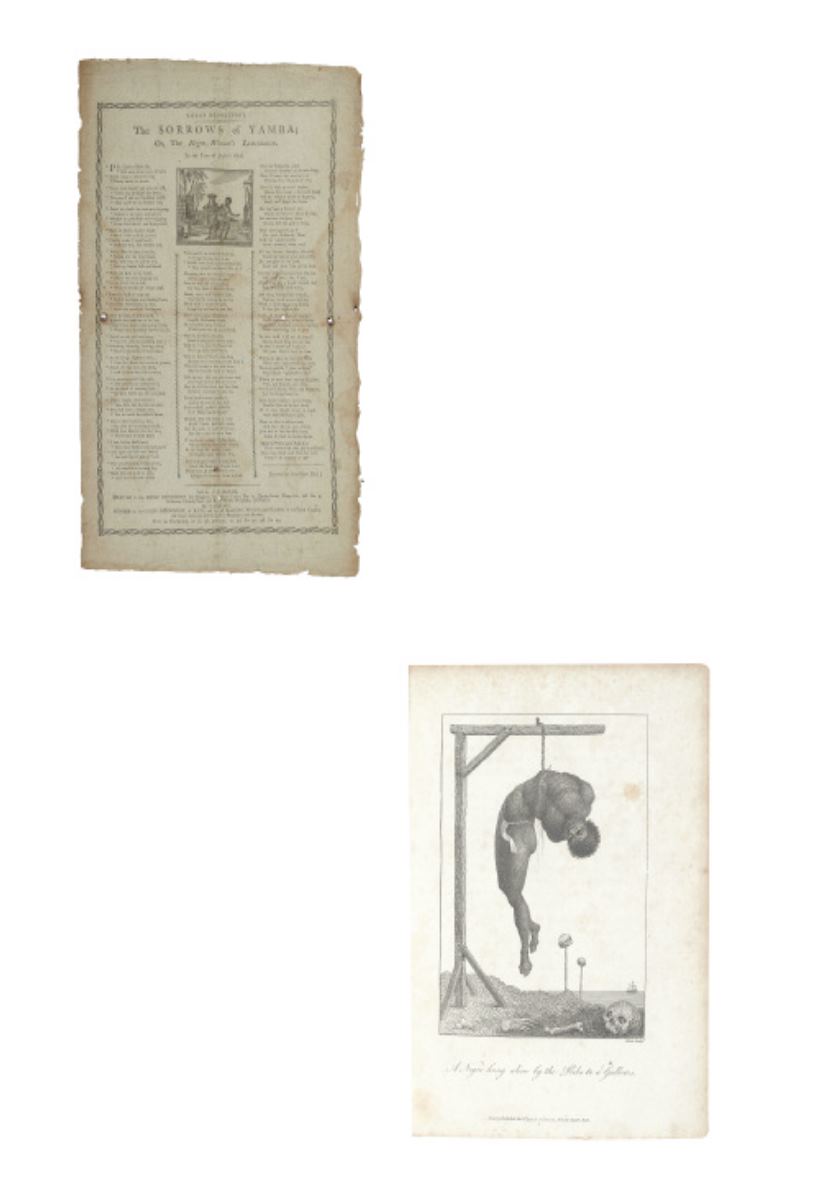

20
●
(SLAVE UPRISINGS.) STED-
MAN, CAPTAIN JOHN GABRIEL.
Narrative of a Five Years’ Expedition
Against the Revolted Natives of
Surinam.
Map of Surinam and 81
inserted plates, several by William Blake.
Two volumes, 4to, contemporary full tree
calf, re-cased at an earlier date; with black
spine labels; tips rubbed; some offset and
foxing to the plates.
SHOULD BE SEEN
.
London: J. Johnson, 1796
[1,500/2,500]
FIRST EDITION OF AN IMPORTANT NARRATIVE
.
Captain John Gabriel Stedman’s (1744-
1797) account of his expedition to Surinam,
today’s Guiana. There he found the natives, a
mixture of local tribes and slaves in open revolt
against the planters—-but not without good
cause, as several of the more horrific plates by
William Blake would suggest. One in particu-
lar, “The Flagellation of a Female Samboe
Slave” depicts a woman strung up on the
branch of a tree by her wrists. This engraving is
often cited when discussing the abuses of slave
owners. Abbey Travel, pages 637-640.
19
●
[MORE, HANNAH].
The Sorrows
of Yamba; Or The Negro Woman’s
Lamentation, to the tune of Hosier’s
Ghost.
Broadside poem, 17
3
⁄
4
x 10
1
⁄
2
inches,
printed in three columns with engraved bor-
ders and engraved vignette, 2
3
⁄
4
x 3 inches at
the top beneath the title; creases where folded;
a couple of tiny holes where droplets of iron
gall ink have oxidized through; heavy hand-
laid, rag paper evenly toned.
London: Sold by J. Marshall, printer to the
Cheap Repository, circa 1795-1798
[1,500/2,500]
An epic poem written by Hannah More (and
Eaglesfield Smith) as part of the “Cheap
Repository” series. A classic piece of abolitionist
poetry, reprinted innumerable times, often copied,
and in one instance turned into an almost novel-like
account. Yamba is typical of the sort of religious abo-
litionism of the day that always included conversion
to Christianity as salvation from slavery, rather than
simple emancipation. Ms. More’s poem deals with
the African mother Yamba, and how she and her
child are taken by slave-traders. There follows a
poetical and horrific account of their “Middle
Passage,” to St. Lucie in the West Indies, the death
of her child, her suffering at the hands of a cruel
slave owner on a plantation, her eventual conversion to Christianity, and her death. We could find no
other copy of this broadside.
20










